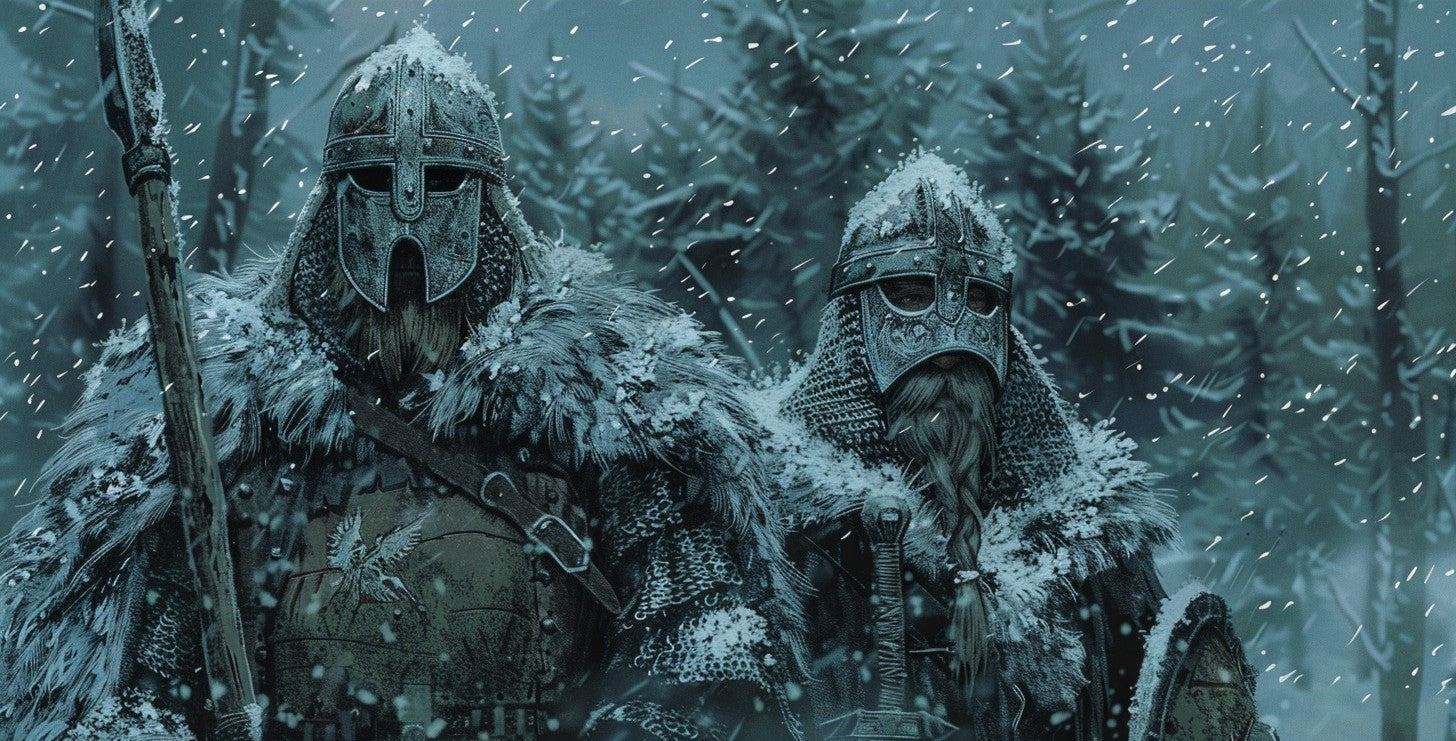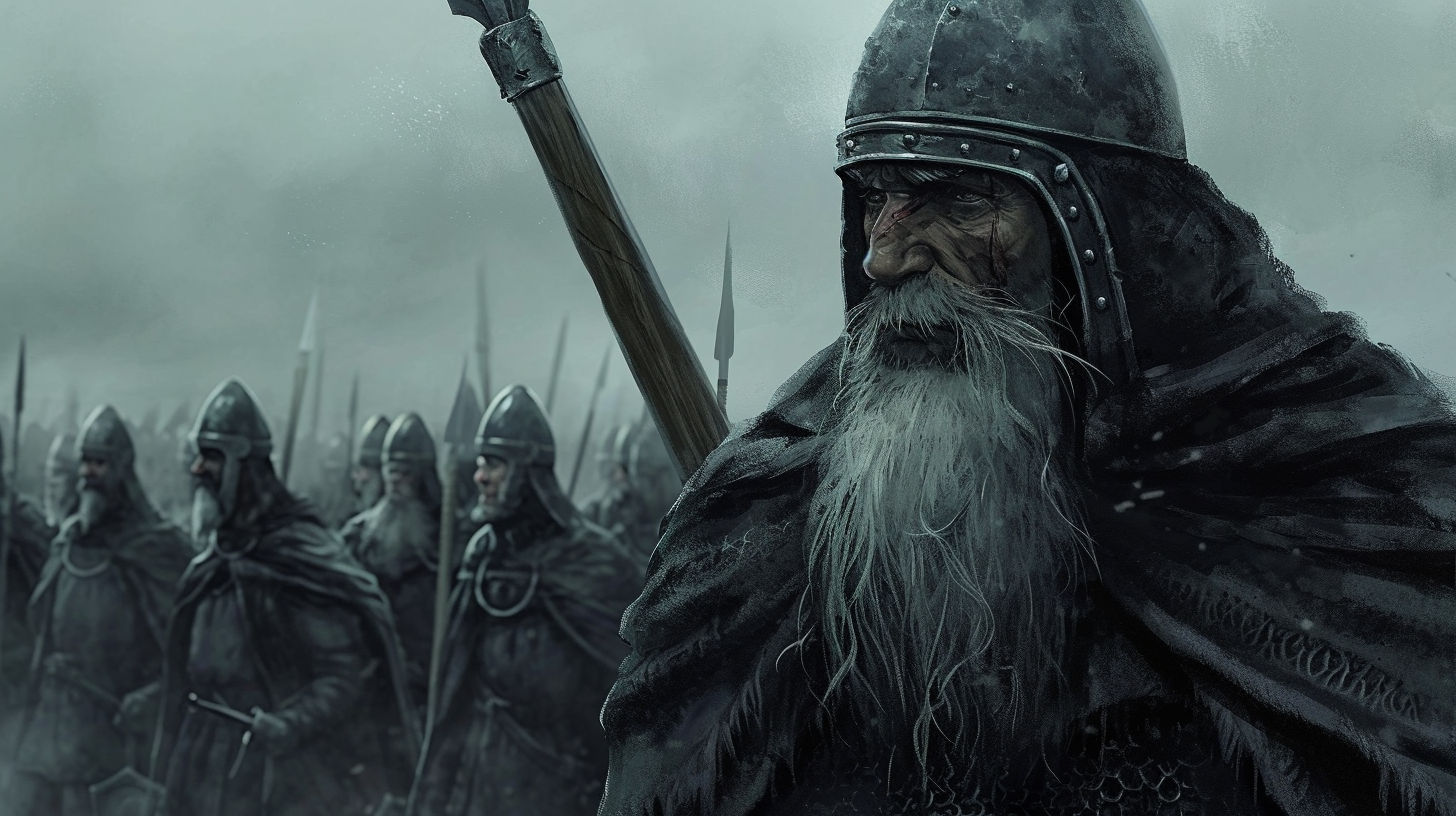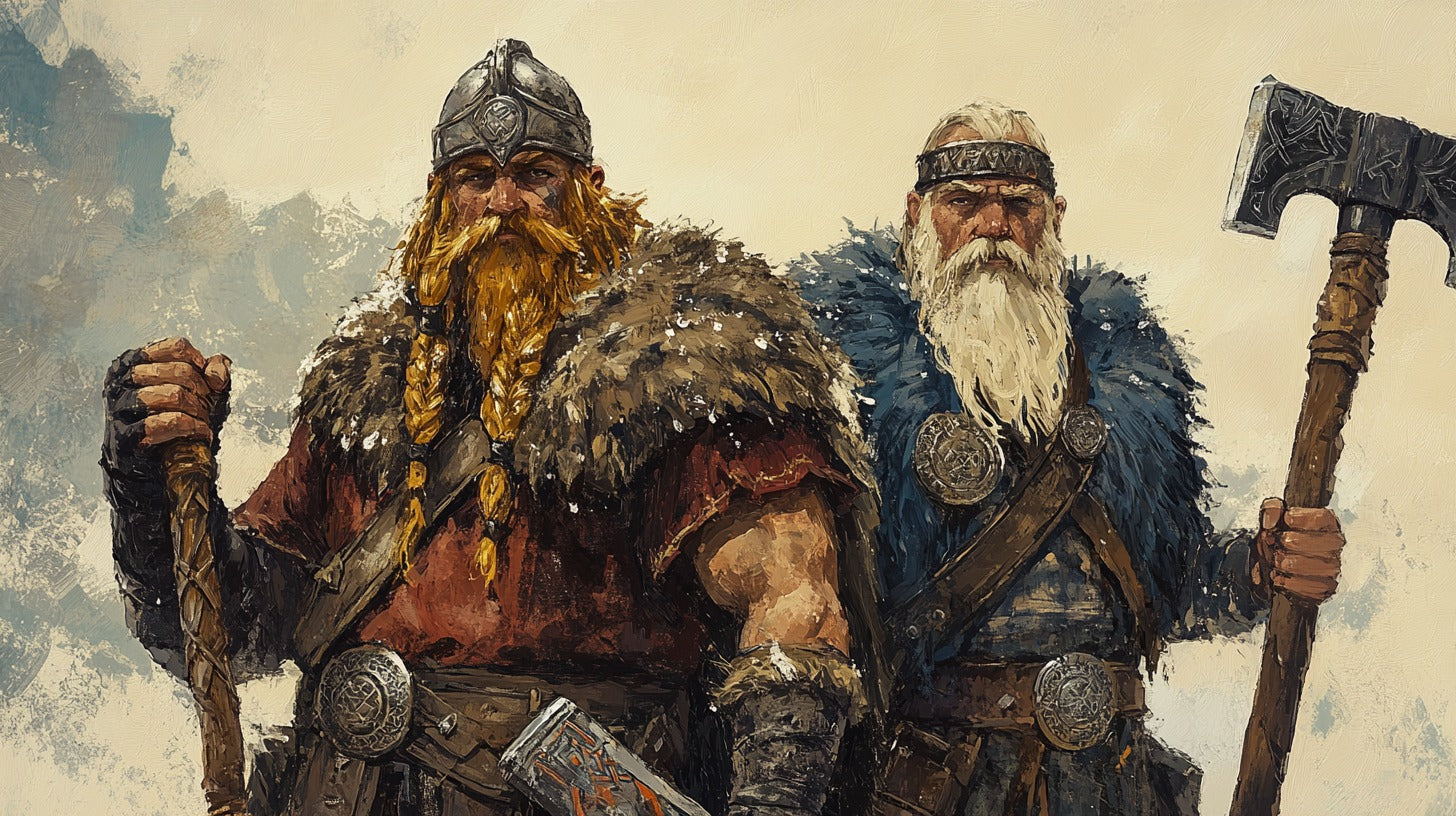
Chaos and Creation: The Jötnar's Influence on Norse Mythology
In Norse mythology, few beings loom as large, both literally and figuratively, as the Jötnar. These colossal entities, often referred to as giants in English, are far more than mere brutes of enormous stature. They are primordial forces, shapers of worlds, and central figures in the cosmic drama that unfolds across the Nine Worlds of Norse cosmology.
Origins of the Jötnar

The Hunnestad Monument, a 10th century picture stone, believed to depict a gýgr riding on a wolf with vipers as reins, which has been proposed to be Hyrrokkin / Photo Credit: Wolfgang Sauber
The Primordial Giant Ymir
At the dawn of creation, in the yawning void of Ginnungagap, there arose a being of immense proportions: Ymir, the first of the Jötnar. Born from the melting ice of Niflheim as it met the fiery sparks of Muspelheim, Ymir was a hermaphroditic giant from whose body the world itself would be fashioned.
Creation Myths Involving Jötnar
The tale of Ymir's creation and subsequent demise at the hands of Odin and his brothers is but one of many creation myths involving the Jötnar. These stories paint a picture of a universe where the giants are not merely antagonists to the gods, but fundamental building blocks of reality itself.
Characteristics and Appearance of Jötnar

Physical Attributes
When we think of giants, we often conjure images of towering humanoids, their heads brushing the clouds. While some Jötnar indeed fit this description, the truth is far more varied and strange. Some giants were said to be of monstrous size, while others could pass for human. Some bore multiple heads or took on animalistic forms.
Magical Abilities
But it would be a grave mistake to think of the Jötnar as mere brutes. Many possessed wisdom that rivaled or even surpassed that of the Æsir, the principal gods of the Norse pantheon. They were often skilled in magic, particularly the art of shapeshifting, and some were said to have the gift of prophecy.
Notable Jötnar in Norse Mythology

Loki: The Trickster God
Perhaps the most famous of all Jötnar is Loki, the trickster god. Born of giant parents but accepted into the ranks of the Æsir, Loki embodies the complex relationship between giants and gods. His cunning and chaos-bringing nature would ultimately lead to his role in bringing about Ragnarök, the twilight of the gods.
Skadi: The Winter Goddess
Skadi, the giantess of winter and hunting, provides another fascinating example of Jötunn-Æsir relations. After her father's death at the hands of the gods, she came seeking vengeance but ended up marrying the god Njördr as part of a settlement. Her story illustrates the blurred lines between giant and god in Norse mythology.
Jörmungandr: The World Serpent
Not all Jötnar took humanoid form. Jörmungandr, the monstrous offspring of Loki grew so large that it encircled the world, grasping its own tail in its mouth. This world serpent would play a crucial role in Ragnarök, locked in mutual destruction with the thunder god Thor.
Jötnar and the Æsir: A Complex Relationship

The Yetnasteen - a standing stone in Rousay in Orkney, held in local folklore to be a giant or jötunn that has been turned to stone / Photo Credit: Ingwina
Conflicts and Battles
The relationship between the Jötnar and the Æsir is often characterized by conflict. Tales abound of Thor's battles against giants, wielding his mighty hammer Mjölnir. Yet these conflicts are not simple good-versus-evil narratives, but complex interactions between primal forces.
Marriages and Alliances
Intriguingly, despite the frequent conflicts, there were numerous marriages and alliances between Jötnar and Æsir. Odin himself was said to have giant ancestry, and many gods took giant wives or husbands. These unions often resulted in offspring of great power and importance in Norse myths.
Realms of the Jötnar

Jötunheimr: The Land of Giants
While the Æsir resided in Asgard, the Jötnar had their own realm: Jötunheimr. This land of mists and mountains, separated from Midgard (the world of humans) by dense forests and high peaks, was a place of wild magic and primordial power.
Other Giant Realms
But Jötunheimr was not the only realm associated with giants. Some dwelled in Muspelheim, the realm of fire, while others made their home in the icy wastes of Niflheim. The diversity of giant realms reflects the varied nature of the Jötnar themselves.
The Role of Jötnar in Ragnarök
As the cosmic cycle of Norse mythology reaches its climax in Ragnarök, the Jötnar play a central role. Led by the fire giant Surtr, they march against the gods in a final, cataclysmic battle. Jörmungandr rises from the sea, Fenrir the wolf breaks free of his chains, and Loki leads an army of the dead. In this final conflict, giants and gods alike fall, paving the way for the world's rebirth.
Jötnar in Modern Culture
The influence of the Jötnar extends far beyond ancient Norse tales. In modern popular culture, from literature to film and video games, giants inspired by Norse mythology continue to capture our imagination. They remind us of the power of primal forces and the complex interplay between creation and destruction.
Conclusion: The Enduring Legacy of the Jötnar
As we reflect on the Jötnar, we are reminded of the depth and complexity of Norse mythology. These beings, at once terrifying and awe-inspiring, embody the raw forces of nature and the mysteries of the cosmos. They are not simply monsters to be slain, but integral parts of the universal order.
The tales of the Jötnar teach us that the line between friend and foe, creator and destroyer, is often blurrier than we might think. In a world that often seeks to simplify narratives into good versus evil, the Jötnar remind us of the nuanced, cyclical nature of existence.
As we face our own giants – be they personal challenges, societal issues, or global crises – perhaps we can draw wisdom from these ancient tales. Like the gods of Norse mythology, we may find that our "giants" are not always what they seem, and that within conflict lies the potential for growth, change, and renewal.
The Jötnar, in all their complex glory, continue to stride through our collective imagination, reminding us of the power of myth to illuminate the human experience and our place in the cosmos.
FAQs
- Are all Jötnar evil in Norse mythology?
No, Jötnar are not inherently evil. They represent primal forces and can be both beneficial and destructive.
- Can Jötnar and gods have children together?
Yes, there are many instances in Norse mythology of Jötnar and gods having children together.
- What is the difference between a Jötunn and a troll?
While both are often portrayed as large and sometimes monstrous, Jötnar are primordial beings often with godlike powers, while trolls are generally lesser supernatural creatures.
- Do any Jötnar survive Ragnarök?
According to some versions of the myth, certain Jötnar do survive Ragnarök and populate the new world that emerges.
- Are there any female Jötnar in Norse mythology?
Yes, there are many notable female Jötnar, often referred to as giantesses, such as Skadi and Angrboda.
References
Sturluson, S. (2005). The Prose Edda. Penguin Classics.
Larrington, C. (Trans.). (2014). The Poetic Edda. Oxford World's Classics.
Lindow, J. (2001). Norse Mythology: A Guide to Gods, Heroes, Rituals, and Beliefs. Oxford University Press.
Simek, R. (1993). Dictionary of Northern Mythology. D.S. Brewer.
Orchard, A. (1997). Dictionary of Norse Myth and Legend. Cassell.








